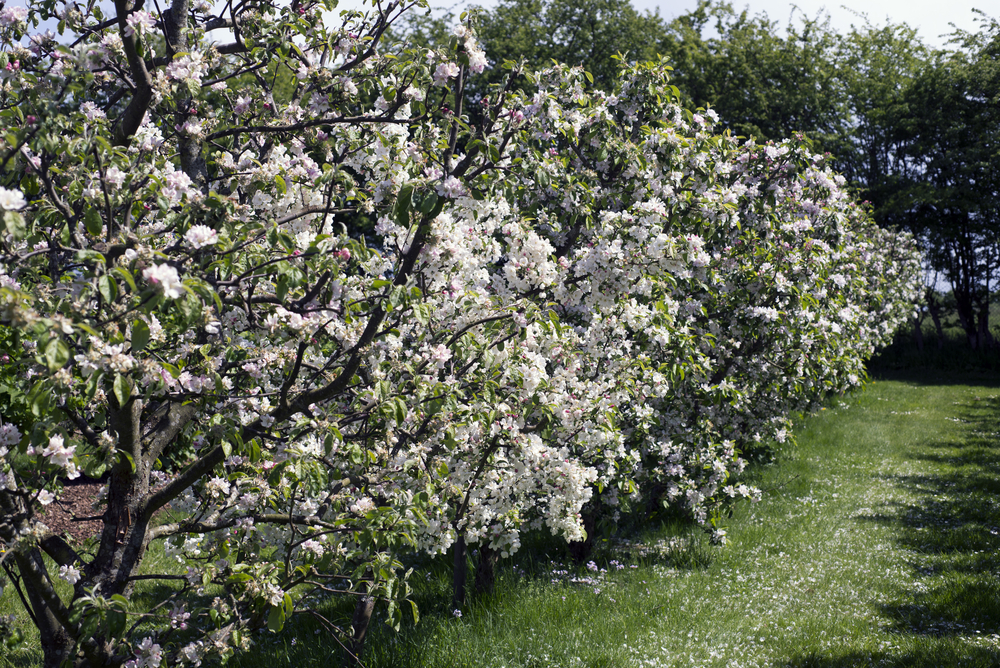If you want sweet, juicy apples from your backyard tree, regular pruning is a must. Pruning lets the tree focus its energy on fewer, stronger branches
Others are reading now
If you want sweet, juicy apples from your backyard tree, regular pruning is a must. Pruning lets the tree focus its energy on fewer, stronger branches — the ones that actually bear fruit.
Gardeners have used pruning techniques for centuries. Just like with ornamental shrubs, you can shape an apple tree’s growth, steer it away from obstacles, and encourage younger, more productive shoots.
Fortunately, pruning an apple tree is straightforward once you know what to look for. This guide walks you through the key steps so you get the biggest, tastiest harvest possible.
How to Prune an Apple Tree
The goal is to remove branches and shoots the tree shouldn’t waste energy on, allowing the healthy limbs to produce high‑quality apples.
Also read
Always start by cutting away:
- Dead branches — they’ll never produce apples and only clutter the canopy.
- Diseased branches — any limb with fungus or other infections can harm the rest of the tree.
- Vertical shoots — they may fruit, but nowhere near as well as horizontal branches, so remove them confidently.
If the canopy is dense, thin it out to let light and air reach the interior.
A good rule of thumb is to remove about one‑third of the total branch mass, but not more. Step back occasionally and circle the tree to gauge how much you’ve taken off and whether more thinning is necessary.
Cut flush with the parent limb, right where the branch meets the trunk or larger branch. That directs nutrients to areas that will actually grow and fruit.
Tool tip: An electric lopper can make quick work of thicker limbs.
Pruning Newly Planted Apple Trees
You can prune a newly planted apple tree, but proceed with care:
- Prune less often — wait two to three years between sessions.
- Focus only on removing dead or diseased wood and on gentle shaping, such as:
- Reducing height so the tree doesn’t shoot up too fast.
- Trimming away growth headed toward other plants or structures.
- Light aesthetic shaping to keep the overall form attractive.
As long as cuts are moderate and infrequent, pruning won’t harm a young tree, but keep a close eye to avoid over‑removal.
Best Time of Year to Prune
For years gardeners debated summer versus winter pruning, but most experts now agree that late summer is ideal. Why?
- The tree produces far fewer water sprouts (vertical “suckers” that drain energy).
- It has plenty of vigor to seal wounds quickly, reducing stress and disease risk.
- Overall tree health improves, and fungal problems are less common.
What About Spring Pruning?
Spring works too, and some growers prefer it. It’s a great time to remove any water sprouts that developed over winter so the tree doesn’t waste energy on them. Just remember the tree’s energy reserves are lower than in late summer, so healing is slower.
Can You Prune in Winter?
Yes—this used to be standard practice. However, limited sunlight and nutrients mean the tree heals more slowly, making winter cuts somewhat harder on it.
Diseases That Affect Pruning Strategy
Several diseases can hit apple trees and shrink your crop, but targeted pruning can help:
- Fungal infections: If the fungus is localized, removing affected limbs often solves the problem.
- Gray mold (Botrytis): Attacks new shoots and older branches that then wither; prune out infected wood promptly.
- Apple canker: Tough to control, but if confined to one part of the tree, cutting out the diseased branches can stop it from spreading.
With the right timing, sharp tools, and an eye for unhealthy wood, you’ll keep your tree vigorous and enjoy a bumper apple crop year after year.


